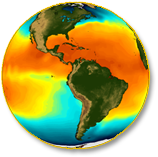Lesson 9
Probabilities, Uncertainties & Units used to Quantify Climate Change
The IPCC assesses materials across many different scientific fields each with its own distinct type of data, indicators, and analyses. In order to communicate uncertainty effectively and consistently, the IPCC defined a framework for the treatment of uncertainty using three different approaches depending on whether the assessment is qualitative, quantitative, or reliant on expert judgment.
In this lesson you will learn:
1) How the IPCC addresses issues of uncertainty and confidence.
2) The basis for the IPCC’s three different approaches to uncertainty.
3) How to relate quantitative analysis to the likelihood scale.
Time Requirement
This lesson will take between 1 hour to 90 minutes.
